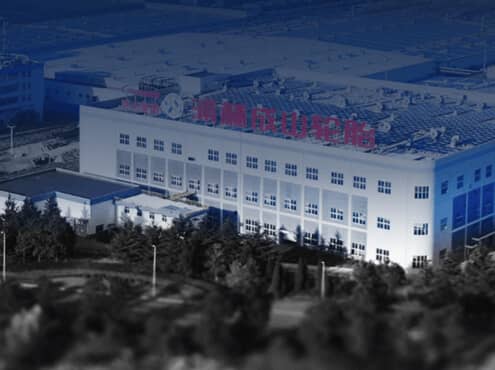


Many car owners say, "Buying a car is easy, but owning one is hard." This is because various additional expenses will be incurred during the daily use of a vehicle, such as fuel costs, insurance fees, car washing expenses, parking fees, maintenance costs, repair charges, and so on. In particular, fuel costs are inevitable as long as you drive a car. Over time, the financial burden on your wallet can become quite substantial. As a result, many car owners are starting to look for best gas mileage tires, hoping to reduce the cost of vehicle maintenance by decreasing fuel consumption, and at the same time, make a contribution to environmental protection. So, how should we choose fuel efficient tires?

How Tires Affect Fuel Efficiency?
The materials, tread patterns and tire pressure of tires can all potentially affect fuel efficiency.Tire Materials:
The rubber materials of many tires possess excellent elasticity and grip. However, this also implies that when these tires are subjected to external forces, they will deform. It takes a certain period of time for them to return to their original state after the external forces are removed. During this dynamic deformation process, relatively large energy losses will occur, leading to an increase in the rolling resistance of the tires.
Tire Tread Patterns:
The shape, depth, and spacing of the tire tread affect how the tire makes contact with the road and the level of friction it generates. If the tread patterns are deep and complex in shape, although they will perform excellently in terms of water drainage and grip, during the rolling process, they will also increase the contact area with the ground and the frictional force. As a result, more energy is required to overcome the resistance.
Tire Pressure:
When the pressure is low, the tires deforms, increasing its contact area with the road. This leads to higher rolling resistance, requiring more energy to overcome the resistance.
The key characteristics of fuel efficient tires
By analyzing how tires affect fuel efficiency, one key point becomes clear: tire rolling resistance. When the rolling resistance of tires increases, more energy is needed to overcome the resistance. Correspondingly, the fuel consumption will rise. This conclusion is also supported by real data. According to the data from the U.S. Environmental Protection Agency (EPA), for every 10% increase in tire rolling resistance, the fuel consumption of the entire vehicle will increase by 2% to 3%.
Therefore, best fuel saving tires must have a key characteristic, which is low rolling resistance.
How can we reduce the rolling resistance of tires?
To reduce the rolling resistance without affecting the tire's grip and wear resistance, the key is still to start from the aspect of "deformation". Best fuel efficient tires will reduce tire deformation and thus lower the rolling resistance by innovating the tire rubber formula, adopting a special tread pattern design, and increasing the tire's rigidity.
For example, the FSR-801, developed by FORTUNE Tires as the best tires for fuel economy, is specifically designed for small city cars and compact vehicles. It features an optimized tread pattern and a wear-resistant rubber compound, which can reduce energy loss and heat generation, lower the rolling resistance, and strike a good balance between driving range and fuel efficiency.

The high-performance winter tire FSR-901 developed by this brand specifically for sedans and sport utility vehicles (SUVs) also has excellent fuel economy. It uses 3D sipes to reduce deformation, and at the same time enhances the rigidity of the tread, greatly reducing the rolling resistance. At the same time, it also adopts a unique round hole design, which enhances the surface adsorption ability between the tire and the ice surface, allowing for easy and sensitive handling even on hard ice and snow roads. The serrated tread pattern, three wide grooves, and a special rubber compound formula also endow this tire with outstanding traction and braking performance on icy, snowy, and slippery road surfaces.
Are Fuel-Efficient Tires Right for You?
Fuel efficient tires are not only fuel-saving and environmentally friendly, which can reduce the cost of vehicle maintenance, but also have excellent wear resistance, enabling them to extend the service life of tires. Apparently, they are a very cost-effective choice. If you are commuting daily or driving on paved roads, there is no problem in using the best tires for fuel efficiency. However, if you often drive on rural roads with poor road conditions or in off-road areas, you may need tires that are more rugged, durable and have strong grip instead.
Conclusion
In general, tires play a crucial role in a car's fuel efficiency. The design and construction of the tire tread and carcass directly impact the car's fuel consumption. When choosing tires, car owners should prioritize best gas mileage tires, such as the FORTUNE FSR-801 and FSR-901 Tires, which can effectively save fuel, protect the environment and reduce expenses.
FAQs
Do fuel-efficient tires wear out faster?
Fuel-efficient tires do not necessarily wear out faster.
Best gas mileage tires typically reduce rolling resistance through optimizing material formulas, tread patterns, and structures. If the material formula uses rubber and additives with good wear resistance while ensuring low rolling resistance, and the tread pattern is designed reasonably to evenly distribute pressure, then under normal use conditions, there won't be a significant difference in the wear of energy-saving tires compared with regular tires. In fact, due to the reduced rolling resistance, the vehicle may run more smoothly, which could even reduce unnecessary wear to a certain extent.
Can I use them in snowy conditions?
Best fuel saving tires can be used in snowy conditions, but they are not the best choice.
This is because most fuel efficient tires are mainly designed to reduce rolling resistance, improve fuel efficiency or extend the driving range. Their grip and anti-skid performance in the snow are usually not as good as those of specialized snow tires. However, some powerful tire brands are developing winter tires that also enhance fuel efficiency, such as the FORTUNE FSR-901 Tires.
Is the price difference worth the long-term savings?
If fuel prices are high in your area, the long-term fuel savings from using fuel-efficient tires can be quite substantial, making the price difference more worthwhile.
Additionally, for those who often drive long distances, the benefits of fuel-efficient tires in reducing rolling resistance and saving fuel will be more noticeable, allowing the price difference to be recouped faster.
For larger vehicles such as SUVs and pickup trucks with higher fuel consumption, the energy-saving effect of fuel-efficient tires is even more significant, resulting in greater long-term savings.








